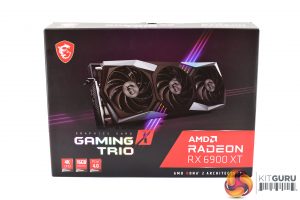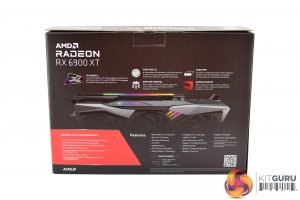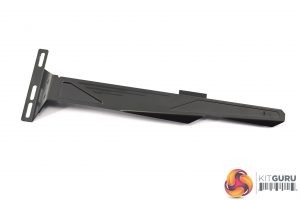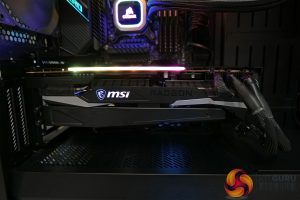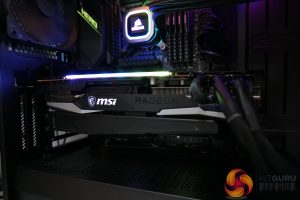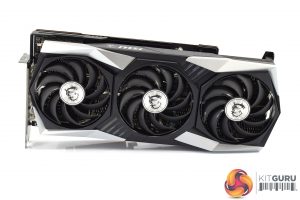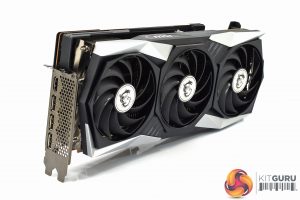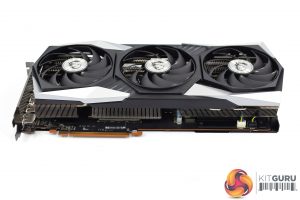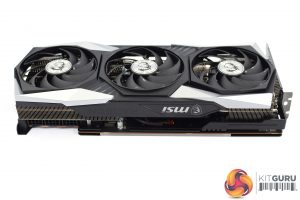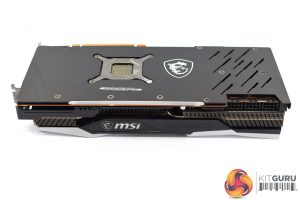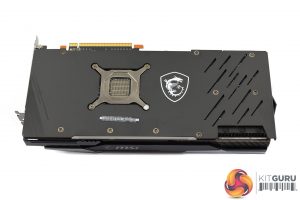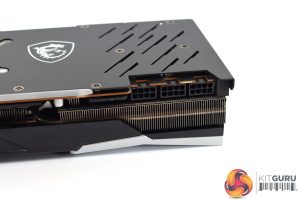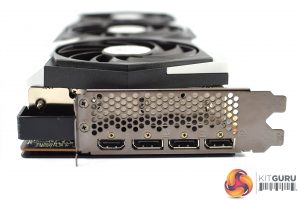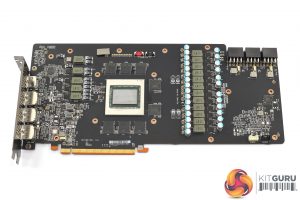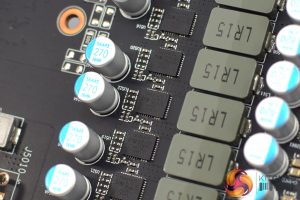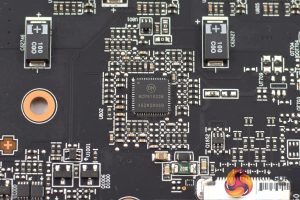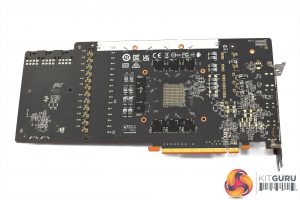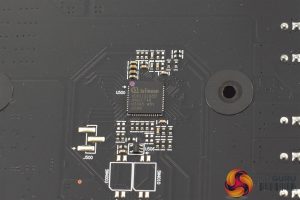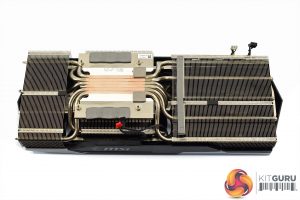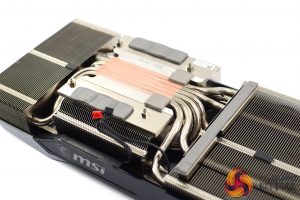The MSI RX 6900 XT Gaming X Trio ships in a dark box, with an image of the graphics card taking pride of place in the centre. On the back, MSI highlights a few key features, including the Torx 4.0 fans and Dragon Center software.
Inside, MSI includes its usual assortment of leaflets and booklets, while we also find a metal support bracket, designed to eliminate any potential GPU sag.
Here we can see the bracket in action, keeping the card pretty level inside our Fractal Design Meshify S2.
The card itself will look instantly familiar to anyone who's seen one of the RTX 30-series Gaming X Trio models, and that's because MSI is sharing the overall design of its cards between AMD and Nvidia GPUs this generation. The RX 5700 XT Gaming X, for instance, had a different overall appearance to the RTX 2070 Super Gaming X Trio, but that is no longer the case.
That means we have a large plastic shroud which is mostly black, aside for a few silver accents. It's a fairly aggressive, ‘gamer-y' look but not nearly as bold as some other designs we have seen in recent uses. It's very colour-neutral, so it should be fine in a colour-coordinated build.
We can also see the three Torx 4.0 fans MSI uses as part of its cooler, with each fan measuring 90mm.
In terms of dimensions, the Gaming X Trio is certainly not one of the faint of heart. We don't have official measurements from MSI, but my tape measure tells me this card is approximately 320mm long and just over 140mm tall. It also weighed in at over 1.5KG on my scales.
On the front side of the card, the MSI logo is positioned on the shroud of the card, while we can see an ARGB lightbar positioned by the backplate. Speaking of the backplate, it's great to see MSI using a metal plate here, extending the length of the card. It's a very stealthy matte black design – I'd guess it is anodised aluminium – with just the MSI dragon logo printed in white.
Power requirements consist of 3x 8-pin PCIe power connectors. We can also note 3x DisplayPort 1.4 and 1x HDMI 2.1 display outputs.
Moving onto the PCB, the first thing to note is the use of two secondary heatsinks which cool the VRM. There's also a small support bracket which screws into the I/O bracket, which MSI claims should help overall rigidity.
Once those are removed, we can get a closer look at the PCB and the underlying componentry. There's a total of 17 stages used here, split in a 14+3 configuration. MSI is using International Rectifier TDA21472 MOSFETs, rated for 70Amps. We can also note the Infineon XDPE132G5D controlled used for the GPU VRM, while MSI deploys the OnSemi NCP80122 controller to handle the memory.
The cooler is comprised of three finstacks, connected by a total of 6x 6mm heatpipes. These heatpipes make direct contact with the GPU die, while the memory contacts with the surrounding baseplate via thermal pads.
 KitGuru KitGuru.net – Tech News | Hardware News | Hardware Reviews | IOS | Mobile | Gaming | Graphics Cards
KitGuru KitGuru.net – Tech News | Hardware News | Hardware Reviews | IOS | Mobile | Gaming | Graphics Cards


